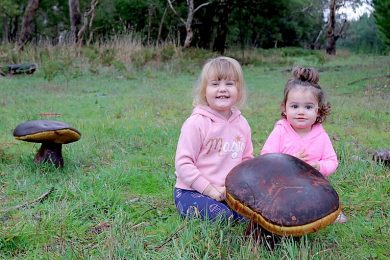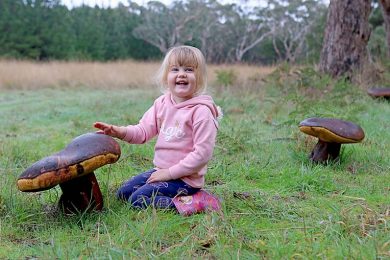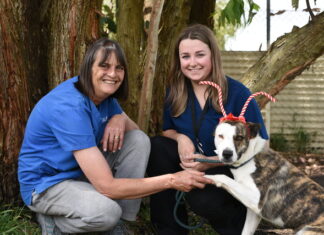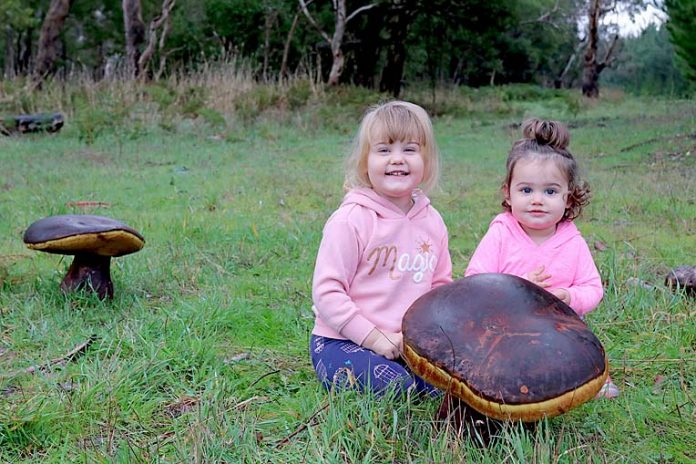
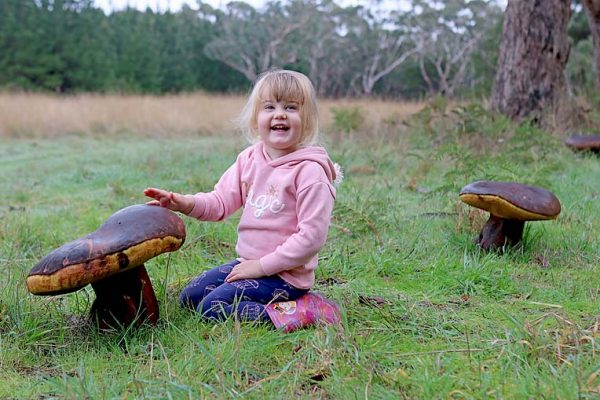
A STROLL through a Glencoe forest has led Limestone Coast resident Dan Rogers to a cluster of giant mushrooms he initially mistook as rock piles.
Mr Rogers had to double-back when something unusual caught his attention while wandering the forest on Tuesday afternoon, with the massive mushrooms creating a commanding presence on a dewy patch of grass.
Joined by his eldest daughter Avianna, 3 and a friend at the time, Mr Rogers said the trio was blown away to find four large mushrooms measuring around 30cm to 40cm in diameter.
“When we went around the corner, we saw something which just looked weird,” he said, admitting he thought it was stacks of brown rocks.
“We could not believe it when we found they were mushrooms and just really began laughing and giggling because they just looked like something out of a cartoon.
“Avianna was immediately intrigued because she had obviously not seen anything like it either.”
Experienced ecologist and environmental photographer Alison Pouliot believes the mushrooms are Phlebopus Marginatus – also known as a giant bolete – which are common across Australia and considered one of the nation’s largest terrestrial fungus.
As part of the bolete species, Ms Pouliot said the fungi often grew in grassy areas in and around Eucalypt woodlands.
“It appears commonly in autumn although it can pop up any time of year after rain,” she said.
“Reports about its edibility are conflicting, with some people claiming they are tasty and others experiencing gastrointestinal distress.
“Often they are too inhabited by maggots, millipedes and their kin to even consider eating.
“Whether edible or not, they play an enormously important role in recycling nutrients and making them available to trees and other plants.”
Ms Pouliot said the species’ cap can reach 60cm or more in diameter.
“’Identifying mushrooms accurately requires a slow and systematic approach, working through all the necessary diagnostic features,” she said.
“This includes the habitat and substrate they grow in and the various parts of the mushroom itself.
“Odour and texture are also important and it is best to examine several specimens at different developmental stages.”
Mr Rogers said when he showed an image of the mushrooms to a friend who had worked in the region’s pine plantations for years, he told him he had never seen anything like it before.
As father to both Avianna and Audrey, 1, Mr Rogers said his girls were excited to go and have a look themselves yesterday.
“They know what mushrooms are because we get them growing at home in the paddock,” he said.
“Avianna was talking about mushrooms the whole way home and when we woke up this morning both were very excited to go and have a look.”
Mr Rogers said he made sure neither the girls or himself damaged the fungi and hoped they would last long enough for someone else to discover.

